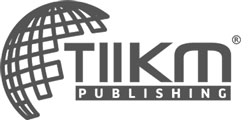MANAGEMENT ASPECTS OF NAVANTHURAI AND KARAINGAR LAGOON FISHING VILLAGES, NORTHERN SRI LANKA
Downloads
License
Copyright (c) 2023 A Kobitha, IU Wickramaratne

This work is licensed under a Creative Commons Attribution 4.0 International License.
Navanthurai and Karainagar both are considered as two main fishing villages situated in different Fisheries Inspector divisions in Jaffna lagoon, northern, Sri Lanka. The socio-economic and fishery status of Karainagar and Navanthurai lagoon fishing villages were meagre and comparative studied since those status of both fishing villages are limited in the literature. This study was conducted from February 2022 to May 2022 with an aim of evaluating socioeconomics for the improvement of livelihood of lagoon fishing communities which may lead optimum management of themselves as well as the fisheries. Primary data were gathered using a semi-structured questionnaire from selected 100 fishermen out of 500 through snowball sampling method at both sites. The secondary data were gathered in the Department of Fisheries and Aquatic Resources (DFAR). Analysis of the socio-economic characteristics and fisheries status were done by using IBM SPSS 26 and excel 2013. The outcome of the study revealed that the majority of fishermen in Navanthurai landing were aged 20-30years with ordinary education (44%) and fishers in Karainagar were middle aged group of men and women (31-40years) with the primary education (57%). The monthly income of fishermen was estimated as 77% in Navanthurai and 71% in Karainagar; which came under 20,000 LKR to 50,000 LKR income category. There were 5 types of fishing crafts i.e., stake net, fyke net, gill net, crab net and cast net and 3 types of fishing gears i.e., Non-Mechanized Traditional Boat (NTRB), Mechanized Traditional Boat (MTRB), and Outboard Fiberglass Reinforced Plastic boat (OFRP) in both fishing villages. During the study period, shellfish which belongs to Penaidae family (3%) and family Portunidae (10%); finfish which belongs to families Mugilidae (17%), Gerreidae (13%), Siganidae (16%), Aridae (11%) and Scardae (9%) were identified in both villages. The higher catches per unit of major fishing gears were recorded as 8-14 kg for the stake net in Navanthurai, 5-10 kg for the fyke net in Karainagar during April 1st -May 1st. The market structure was strong in Navanthurai due to the availability of more stakeholders who involved in marketing of fishes than those of Karainagar. The awareness on fisheries sustainability was at moderate level (2.34<mean value<3.66) in both sites. This study provides baseline information on socio-economic status of two fisheries which would facilitate development of an optimum long-term management strategies.
Bon-Gang, H. (2018). Performance and improvement of green construction projects: Management strategies and innovations. Butterworth-Heinemann.
De Bruin, G. H. P., Russel, B. C., & Bogusch, A. (1994). The Marine Fishery Resources of SriLanka. FAO Species Identification Field Guide for Fishery Purpose. Rome. M-43. ISBN 92-5-103293.
Das, M. R., Ray, S., Kumar, U., Begum, S., & Tarafdar, S. R. (2015). Livelihood assessment of the fishermen community in the south west region of Bangladesh. Journal of Experimental Biology and Agricultural Sciences, 3(4), 353-361.
Froese, R., & Pauly, D. (2019). World wide web electronic publication. FishBase.
Hossain, S. A. Z. Z. A. D., Hasan, M. T., Alam, M. T., & Mazumder, S. K. (2014). Socio-economic condition of the fishermen in jelepara under pahartoli of Chittagong district. J. Sylhet Agril. Univ, 1(1), 65-72.
Kenton, W. (2019). Descriptive statistics. Investopedia.
Middleton, F. (2020). Reliability vs Validity in Research| Differences, Types and Examples. Scribbr. Last modified June, 26.
Moldan, B., Janoušková, S., & Hák, T. (2012). How to understand and measure environmental sustainability: Indicators and targets. Ecological indicators, 17, 4-13.
Ragavan, N., Sivashanthini, K., & Sutharshiny, S. (2016). Socio-economic status of fishers in Allaipiddy village, Jaffna.
Ragavan, N., Dissanayake, D. C. T., & Kuganathan, S. (2021). Status of the fishery of Jaffna lagoon, Sri Lanka.
Tharmine, A., Sivashanthini, K., & Edrisinghe, U. (2018). Socio economic status of crab fishers and marketers in Navanthurai fishing village in Jaffna estuary, Sri Lanka.
Thivviyan, S., & Jayakody, D. S. (2015). Assessment on the present status of coastal fisheries at Gurunagar, Jaffna.
Tharmakokilam, V., Kuganathan, S., & Kuddithamby, G. Comparison of Socio-Economic Status of Fishers in Karainagar, Point Pedro and Mathagal Village, Jaffna.
Hobday, A. J., Ogier, E. M., Fleming, A., Hartog, J. R., Thomas, L., Stobutzki, I., & Finn, M. (2016). Fishery status reports: healthcheck for Australian fisheries. Fisheries Research and Development Corporation.
Kittinger, J. N. (2013). Participatory Fishing Community Assessments to Support Coral Reef Fisheries Comanagement1. Pacific Science, 67(3), 361-381.
Stephenson, R. L., Paul, S., Wiber, M., Angel, E., Benson, A. J., Charles, A., ... & Sumaila, U. R. (2018). Evaluating and implementing social–ecological systems: a comprehensive approach to sustainable fisheries. Fish and Fisheries, 19(5), 853-873.
Ellepola, G., Ranawana, K. B., & Harischandra, S. (2014). Utilization of fishery resources in the Panama lagoon, Ampara District, Sri Lanka. International Journal of Fisheries and Aquatic Studies, 1(5), 32-37.
Kurien, J. (2015). Voluntary guidelines for securing sustainable small-scale fisheries in the context of food security and poverty eradication: summary.
Wijayaratne, B. (2001). Coastal fisheries in Sri Lanka: some recommendations for future management. The United Nations University.
Silva, E. I. L., Katupotha, J., Amarasinghe, O., Manthrithilake, H., & Ariyaratna, R. (2013). Lagoons of Sri Lanka: from the origins to the present. IWMI.





